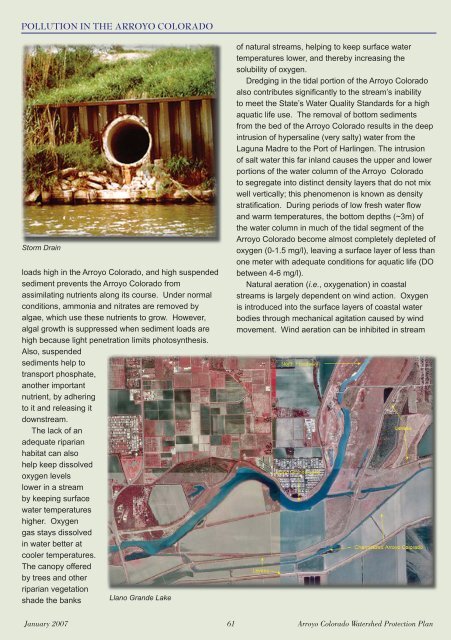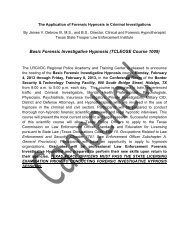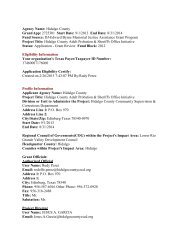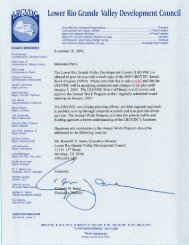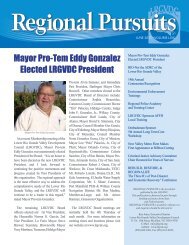Watershed Protection Plan - Lower Rio Grande Valley Development ...
Watershed Protection Plan - Lower Rio Grande Valley Development ...
Watershed Protection Plan - Lower Rio Grande Valley Development ...
Create successful ePaper yourself
Turn your PDF publications into a flip-book with our unique Google optimized e-Paper software.
POLLUTION IN THE ARROYO COLORADO<br />
Storm Drain<br />
loads high in the Arroyo Colorado, and high suspended<br />
sediment prevents the Arroyo Colorado from<br />
assimilating nutrients along its course. Under normal<br />
conditions, ammonia and nitrates are removed by<br />
algae, which use these nutrients to grow. However,<br />
algal growth is suppressed when sediment loads are<br />
high because light penetration limits photosynthesis.<br />
Also, suspended<br />
sediments help to<br />
transport phosphate,<br />
another important<br />
nutrient, by adhering<br />
to it and releasing it<br />
downstream.<br />
The lack of an<br />
adequate riparian<br />
habitat can also<br />
help keep dissolved<br />
oxygen levels<br />
lower in a stream<br />
by keeping surface<br />
water temperatures<br />
higher. Oxygen<br />
gas stays dissolved<br />
in water better at<br />
cooler temperatures.<br />
The canopy offered<br />
by trees and other<br />
riparian vegetation<br />
shade the banks Llano <strong>Grande</strong> Lake<br />
of natural streams, helping to keep surface water<br />
temperatures lower, and thereby increasing the<br />
solubility of oxygen.<br />
Dredging in the tidal portion of the Arroyo Colorado<br />
also contributes signifi cantly to the stream’s inability<br />
to meet the State’s Water Quality Standards for a high<br />
aquatic life use. The removal of bottom sediments<br />
from the bed of the Arroyo Colorado results in the deep<br />
intrusion of hypersaline (very salty) water from the<br />
Laguna Madre to the Port of Harlingen. The intrusion<br />
of salt water this far inland causes the upper and lower<br />
portions of the water column of the Arroyo Colorado<br />
to segregate into distinct density layers that do not mix<br />
well vertically; this phenomenon is known as density<br />
stratifi cation. During periods of low fresh water fl ow<br />
and warm temperatures, the bottom depths (~3m) of<br />
the water column in much of the tidal segment of the<br />
Arroyo Colorado become almost completely depleted of<br />
oxygen (0-1.5 mg/l), leaving a surface layer of less than<br />
one meter with adequate conditions for aquatic life (DO<br />
between 4-6 mg/l).<br />
Natural aeration (i.e., oxygenation) in coastal<br />
streams is largely dependent on wind action. Oxygen<br />
is introduced into the surface layers of coastal water<br />
bodies through mechanical agitation caused by wind<br />
movement. Wind aeration can be inhibited in stream<br />
January 2007 61 Arroyo Colorado <strong>Watershed</strong> <strong>Protection</strong> <strong>Plan</strong>


